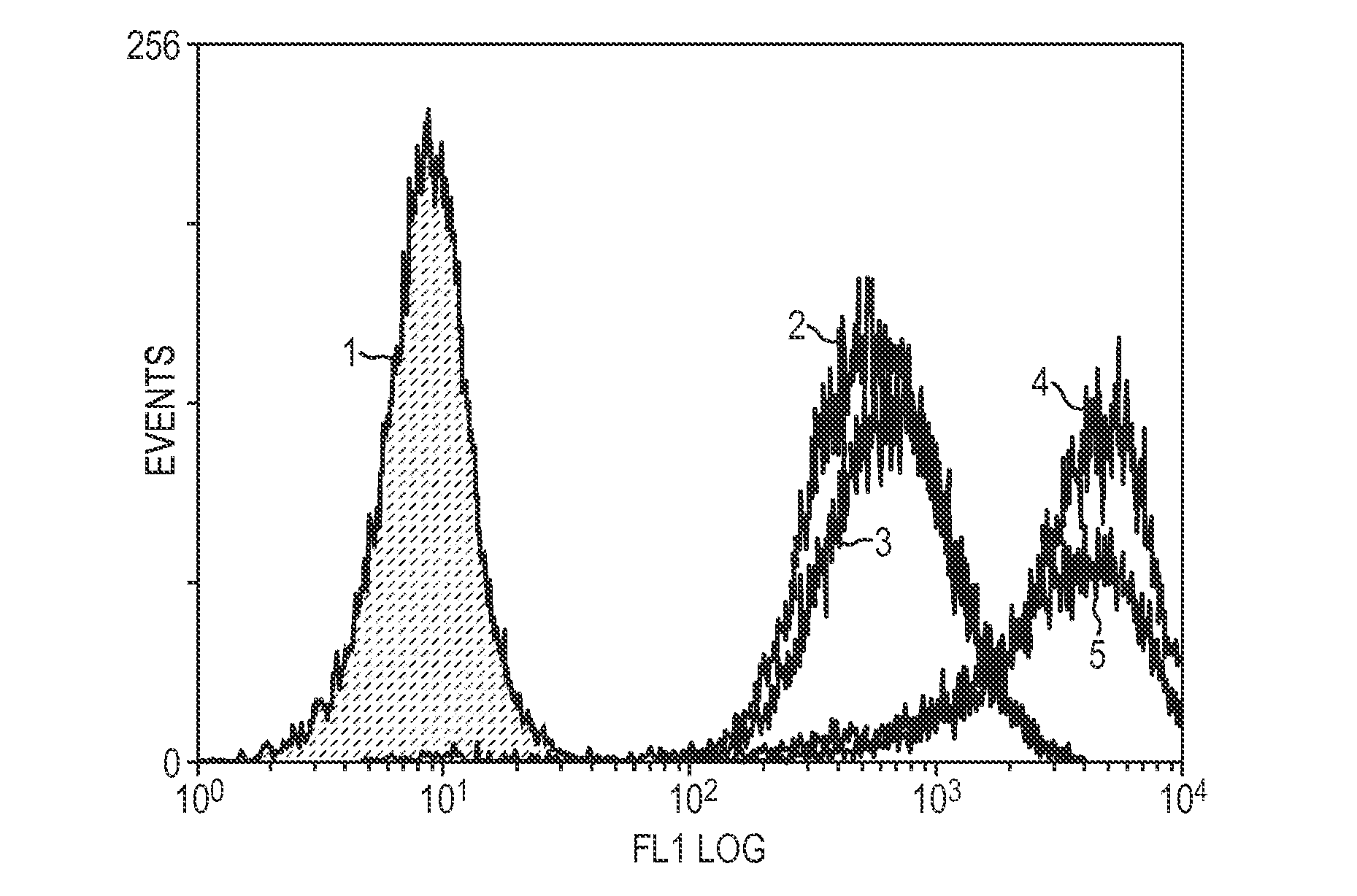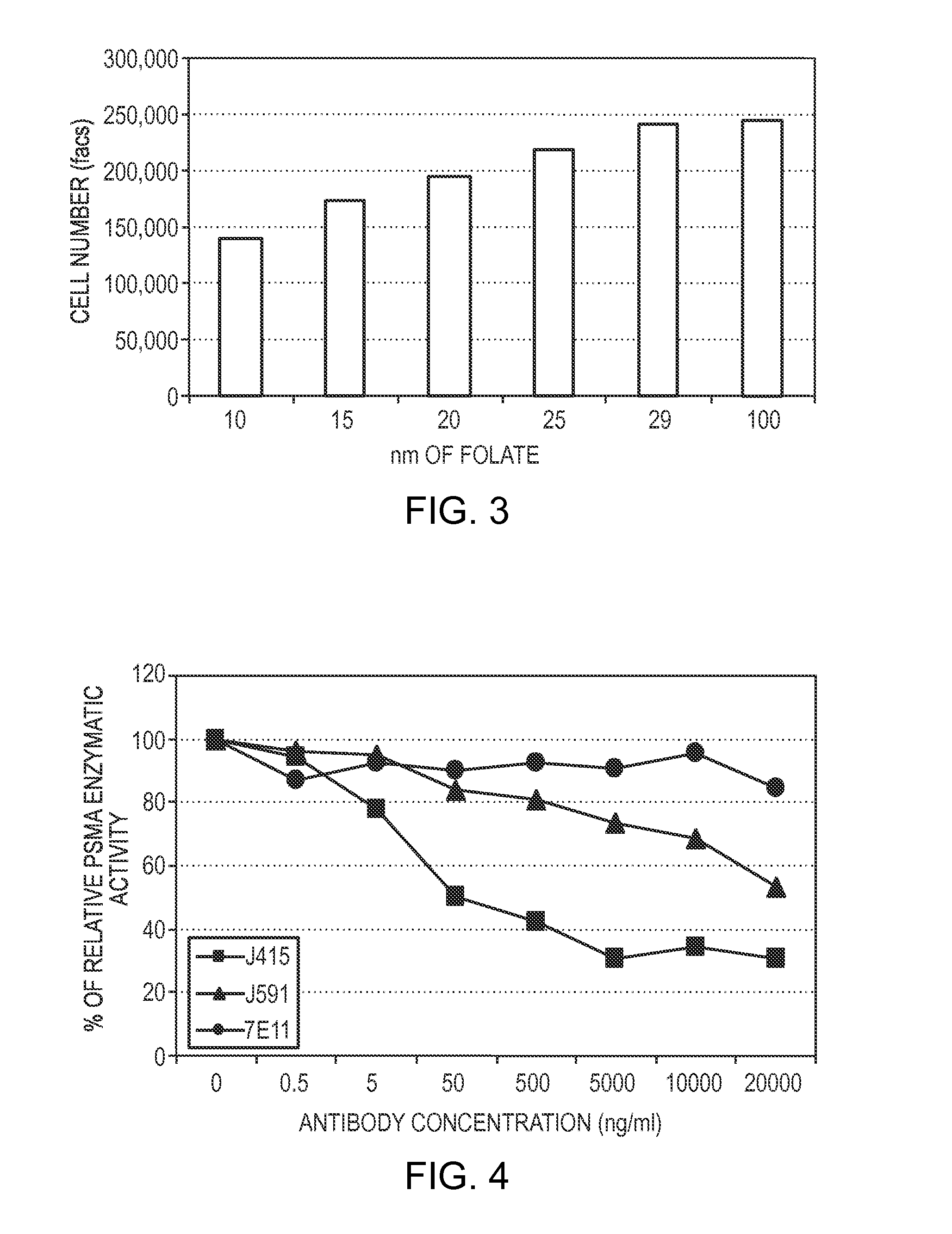Treatment of Proliferative Disorders Using Antibodies to PSMA
a proliferative disorder and antibody technology, applied in the field of proliferative disorders, can solve the problems of reducing cell motility and invasion, affecting the normal body folate metabolism, and affecting the use of psma enzyme inhibitors in the past, and achieving the effect of restricting folate intake and inhibiting the enzymatic activity of psma
- Summary
- Abstract
- Description
- Claims
- Application Information
AI Technical Summary
Benefits of technology
Problems solved by technology
Method used
Image
Examples
examples
Effect of Hormone Withdrawal on PSMA Expression.
[0133]Prostate cancer cell lines, LNCaP and MDA-Pca-2b were grown in standard medium containing 10% fetal calf serum (FCS) or 10% FCS that had been charcoal stripped (CS-FCS). FCS contains steroid hormones including androgens, whereas CS-FCS does not have steroid hormones including androgens, because charcoal-stripping removes some components of serum including steroid hormones. Charcoal-stripping is the standard method for removing hormones from media. The various curves represent PSMA levels after growing cells for the specified period of time in the CS-FCS media. The PSMA levels are detected by contacting the cells with J591, an anti-PSMA antibody, followed by a labeled secondary antibody that recognizes J591. The labeled cells are then analyzed by FACS.
[0134]FIG. 1 shows that at 1 week (line 3), there is very little increase in PSMA expression in LNCaP cells. However, by 2 weeks (line 4) there is what equates to a 9-fold increase i...
PUM
| Property | Measurement | Unit |
|---|---|---|
| diameter | aaaaa | aaaaa |
| concentration | aaaaa | aaaaa |
| concentration | aaaaa | aaaaa |
Abstract
Description
Claims
Application Information
 Login to View More
Login to View More - R&D
- Intellectual Property
- Life Sciences
- Materials
- Tech Scout
- Unparalleled Data Quality
- Higher Quality Content
- 60% Fewer Hallucinations
Browse by: Latest US Patents, China's latest patents, Technical Efficacy Thesaurus, Application Domain, Technology Topic, Popular Technical Reports.
© 2025 PatSnap. All rights reserved.Legal|Privacy policy|Modern Slavery Act Transparency Statement|Sitemap|About US| Contact US: help@patsnap.com



